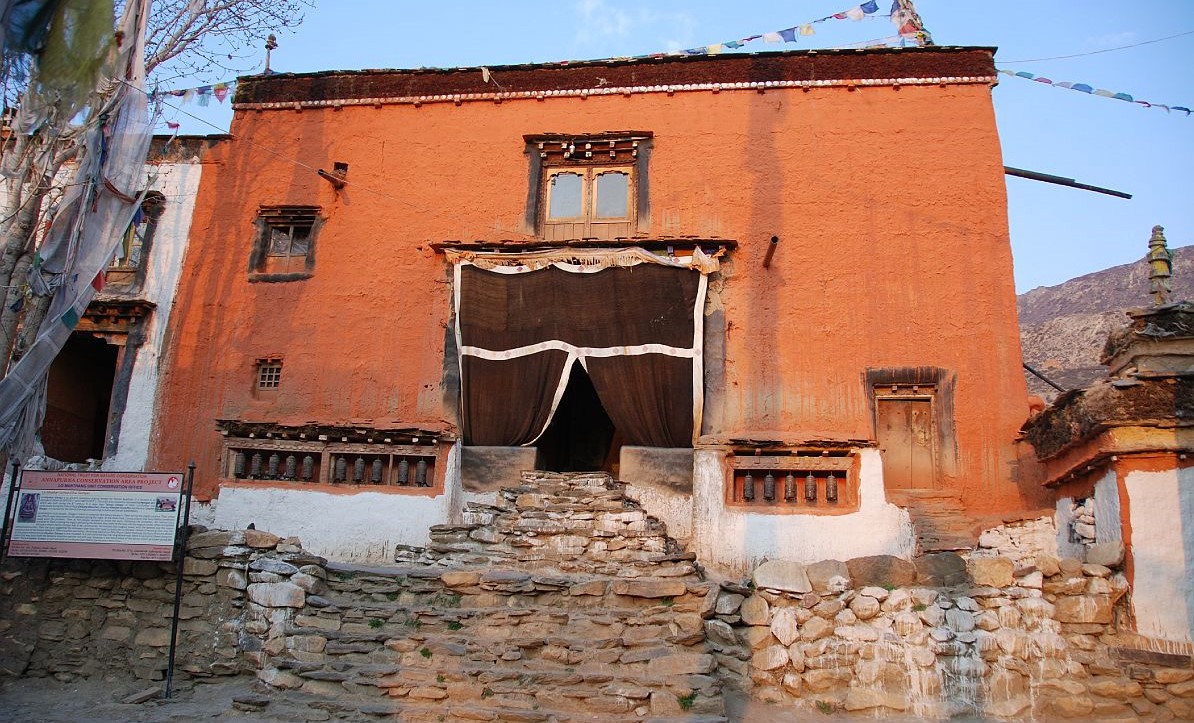Interesting things about Ghar Gomba | All you need to know about Ghar Gomba
Ghar Gomba, also known as Ghar Monastery or Ghar Gompa, is a prominent Buddhist monastery located in the Mustang district of Nepal. Mustang is a remote and mountainous region situated in the northern part of Nepal, bordering Tibet (China).
Here are some key details about Ghar Gomba:
1. Location and Geography:
Ghar Gomba is situated on a hilltop at an elevation of approximately 3,800 meters (12,467 feet) above sea level. The village of Ghar is located in the upper Mustang region, which lies to the north of the Annapurna and Dhaulagiri mountain ranges. The monastery offers panoramic views of the surrounding rugged landscapes, deep valleys, and snow-capped peaks, creating a mesmerizing setting.
2. History and Cultural Significance:
Ghar Gomba has a rich history that dates back to the 8th century. It is believed to have been founded by the ancient Tibetan master Padmasambhava, also known as Guru Rinpoche, who played a vital role in spreading Buddhism across the Himalayan region. The monastery has served as a spiritual center and a hub of Buddhist learning for centuries.
3. Architectural Features:
Ghar Gomba reflects the traditional Tibetan Buddhist architectural style. The structures within the monastery complex are made of stone, wood, and mud, blending harmoniously with the natural environment. The main prayer hall, known as the "du-khang," is adorned with intricate wood carvings, vivid murals, and colorful Thangka paintings depicting Buddhist deities and stories. The monastery also houses statues of various Buddhas, bodhisattvas, and other religious figures.
4. Spiritual Practices and Festivals:
Ghar Gomba is a place of worship and spiritual practice. The resident monks engage in daily rituals, including chanting prayers, performing meditative practices, and conducting religious ceremonies. These practices aim to cultivate compassion, wisdom, and enlightenment.
The monastery also celebrates various festivals that hold great cultural and religious significance. One of the most notable festivals is the Tiji Festival, a three-day event held annually in the month of May. During Tiji, masked dances, known as "cham," are performed by the monks. These dances depict ancient Buddhist legends and symbolize the triumph of good over evil. The festival attracts both locals and visitors, offering a unique cultural experience.
5. Accessibility and Trekking:
Reaching Ghar Gomba requires a certain level of effort due to its remote location. The most common ways to reach Mustang are by air or by trekking. The nearest airport is in Jomsom, where regular flights operate from Pokhara. From Jomsom, it takes several hours of trekking through the picturesque Mustang trails to reach the village of Ghar and the monastery.
Trekking in Mustang offers an opportunity to explore the untouched beauty of the region, including its diverse landscapes, ancient cave dwellings, and unique cultural heritage. It is advisable to plan treks in Mustang during the spring (April-May) and autumn (September-November) seasons, as the weather is generally favorable during these times.




.jpg)



